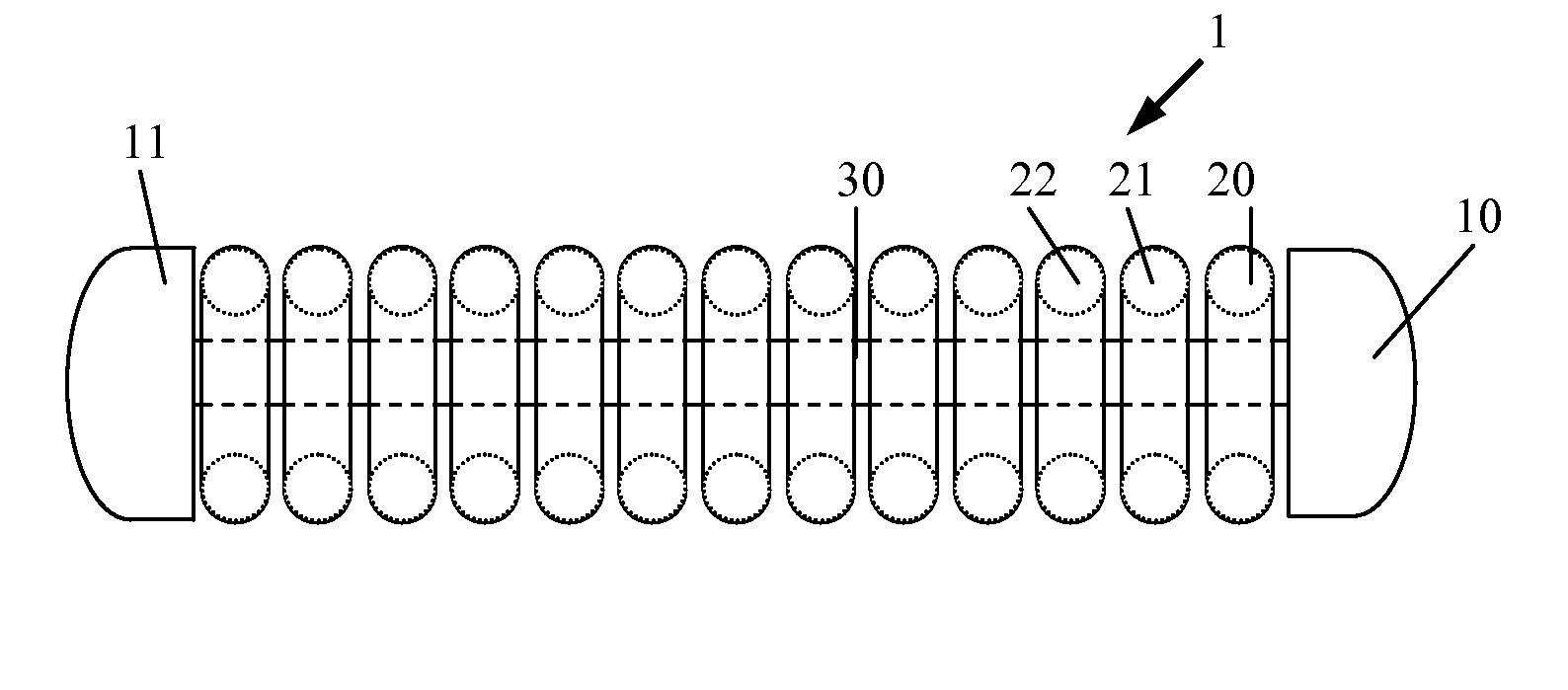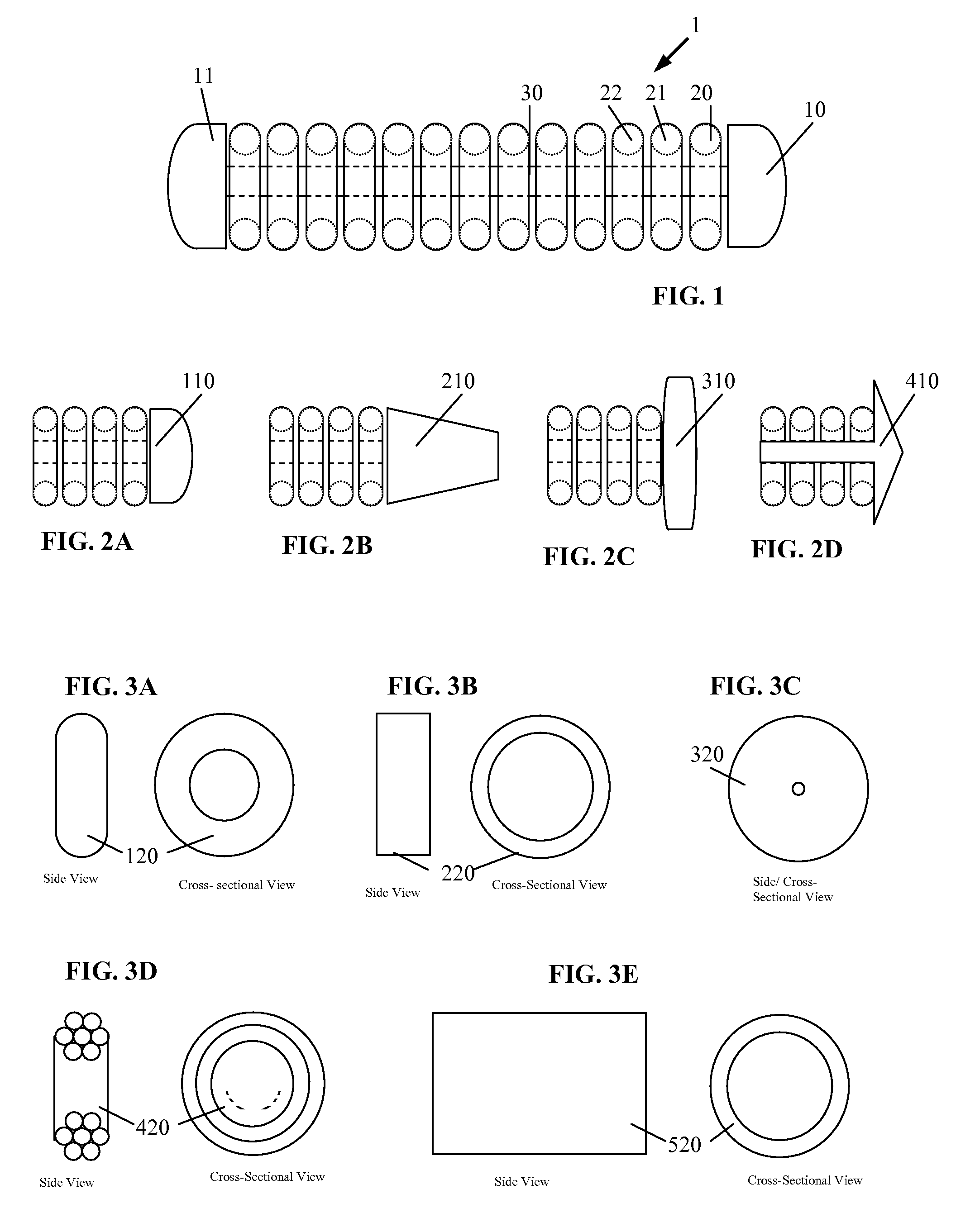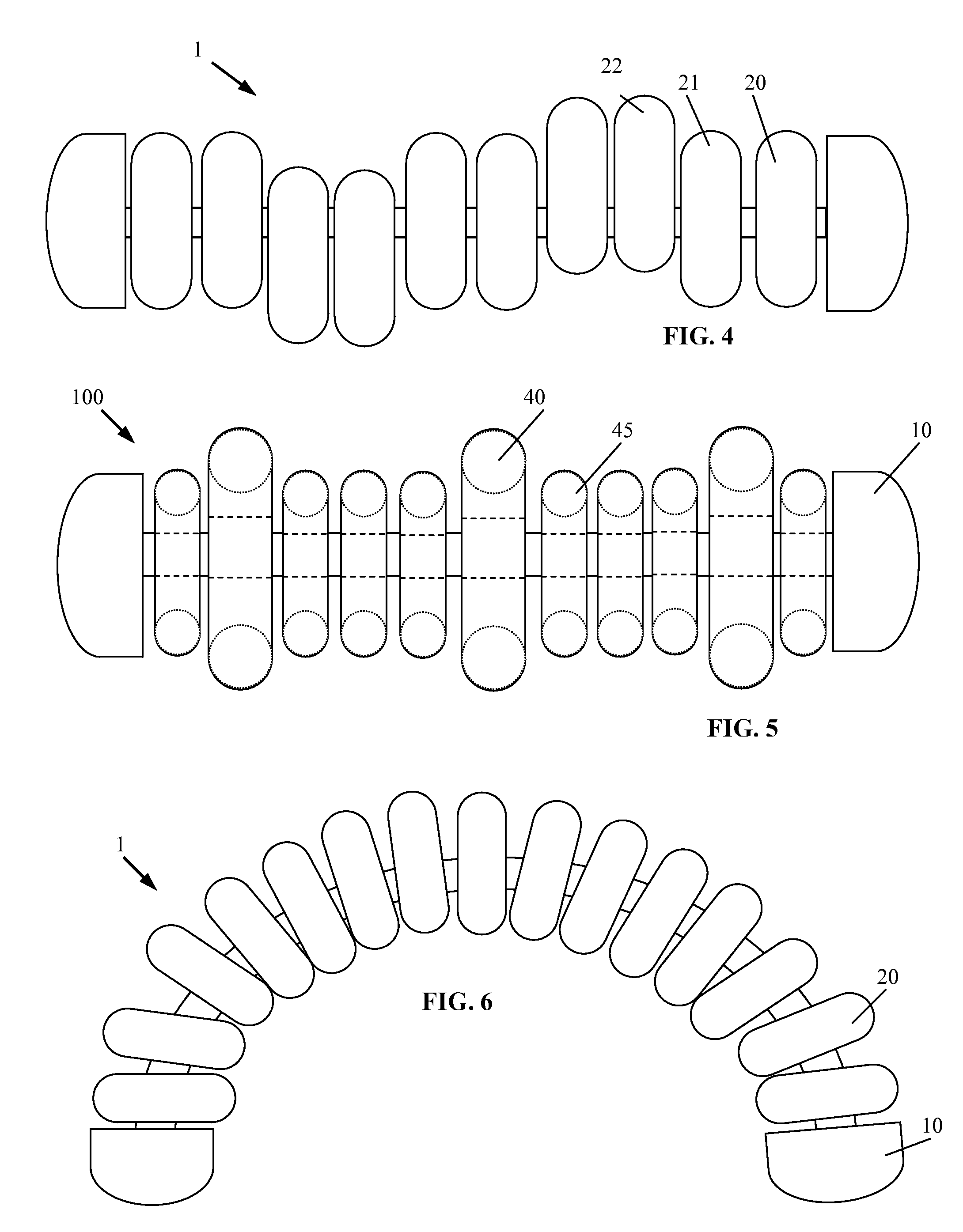Fiducial marker with rings
a technology of ring and ring, applied in the field of interstitial markers for localization of organs, tumors and tumor beds, can solve the problems of negating the usefulness of markers, markers can still be difficult to locate, and both types of designs can have limitations
- Summary
- Abstract
- Description
- Claims
- Application Information
AI Technical Summary
Benefits of technology
Problems solved by technology
Method used
Image
Examples
Embodiment Construction
[0019]A fiducial or interstitial marker 1 according to an embodiment of the invention is formed of a plurality of rings 20, 21, 22, as illustrated in FIG. 1. The rings 20, 21, 22 may be of different sizes and shapes, as discussed below. Each of the rings 20, 21, 22 includes a central hole. The central hole may be axially centered, as illustrated in FIG. 1, or may be off-set at any position in the ring. According to embodiments of the invention, the rings may have outside diameters ranging from 0.25 mm to 2.00 mm. The wall thicknesses of the rings may range from 0.025 mm to 0.95 mm. The ring wire widths (when seen from the side as illustrated in FIG. 1) may range from 0.001 cm to 10.0 cm. Typically, markers range from 3.0 mm to 10.0 cm. The widths, number and spacing of the rings are adjusted to obtain a marker of desired length. Although all of the rings in FIG. 1 are illustrated as being of similar size, shape and width. A single marker may include different rings.
[0020]The rings m...
PUM
 Login to View More
Login to View More Abstract
Description
Claims
Application Information
 Login to View More
Login to View More - R&D
- Intellectual Property
- Life Sciences
- Materials
- Tech Scout
- Unparalleled Data Quality
- Higher Quality Content
- 60% Fewer Hallucinations
Browse by: Latest US Patents, China's latest patents, Technical Efficacy Thesaurus, Application Domain, Technology Topic, Popular Technical Reports.
© 2025 PatSnap. All rights reserved.Legal|Privacy policy|Modern Slavery Act Transparency Statement|Sitemap|About US| Contact US: help@patsnap.com



